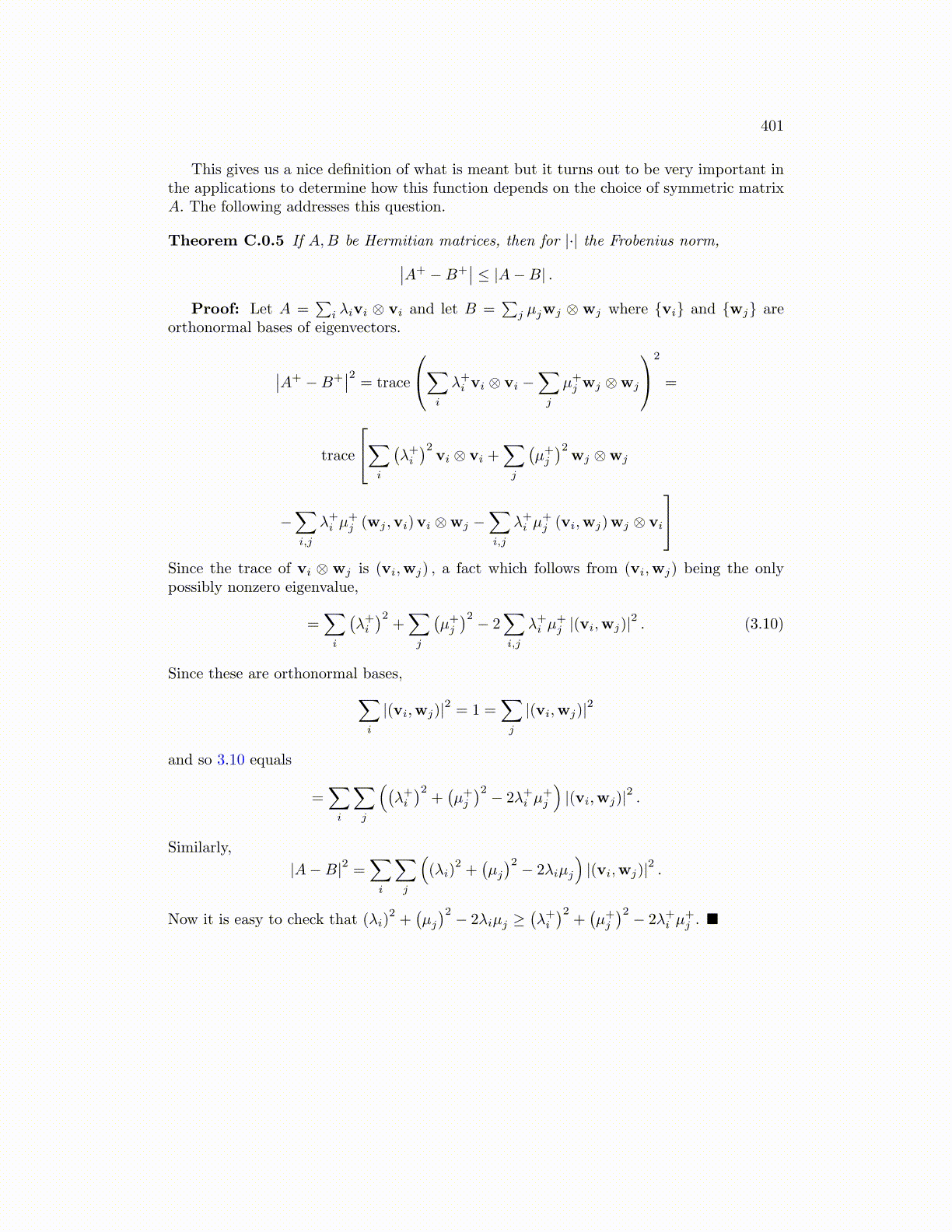
401
This gives us a nice definition of what is meant but it turns out to be very important inthe applications to determine how this function depends on the choice of symmetric matrixA. The following addresses this question.
Theorem C.0.5 If A,B be Hermitian matrices, then for |·| the Frobenius norm,∣∣A+ −B+∣∣ ≤ |A−B| .
Proof: Let A =∑
i λivi ⊗ vi and let B =∑
j µjwj ⊗ wj where {vi} and {wj} areorthonormal bases of eigenvectors.
∣∣A+ −B+∣∣2 = trace
∑i
λ+i vi ⊗ vi −∑j
µ+j wj ⊗wj
2
=
trace
∑i
(λ+i)2
vi ⊗ vi +∑j
(µ+j
)2wj ⊗wj
−∑i,j
λ+i µ+j (wj ,vi)vi ⊗wj −
∑i,j
λ+i µ+j (vi,wj)wj ⊗ vi
Since the trace of vi ⊗ wj is (vi,wj) , a fact which follows from (vi,wj) being the onlypossibly nonzero eigenvalue,
=∑i
(λ+i)2
+∑j
(µ+j
)2 − 2∑i,j
λ+i µ+j |(vi,wj)|2 . (3.10)
Since these are orthonormal bases,∑i
|(vi,wj)|2 = 1 =∑j
|(vi,wj)|2
and so 3.10 equals
=∑i
∑j
((λ+i)2
+(µ+j
)2 − 2λ+i µ+j
)|(vi,wj)|2 .
Similarly,
|A−B|2 =∑i
∑j
((λi)
2+(µj
)2 − 2λiµj
)|(vi,wj)|2 .
Now it is easy to check that (λi)2+(µj
)2 − 2λiµj ≥(λ+i)2
+(µ+j
)2 − 2λ+i µ+j . ■